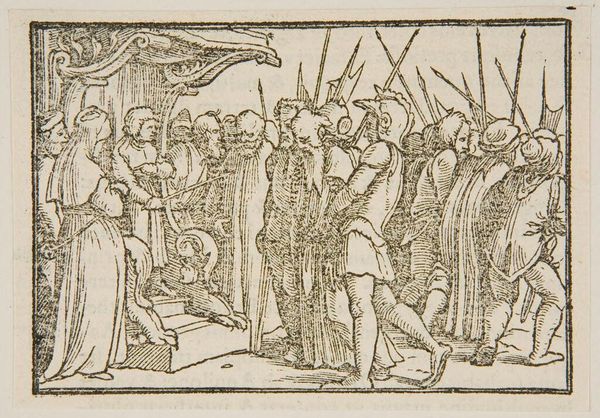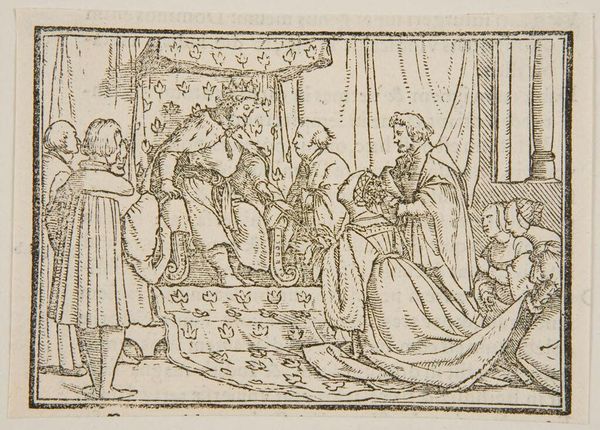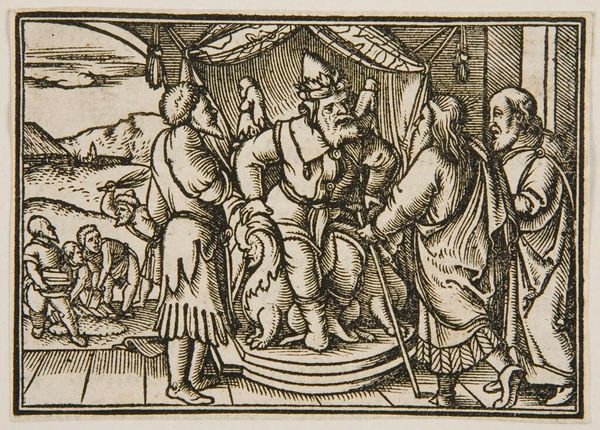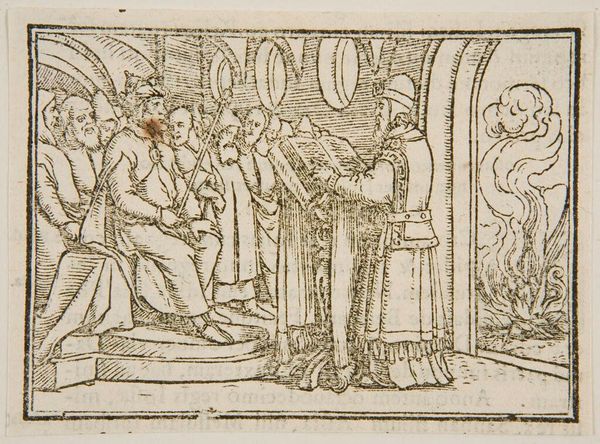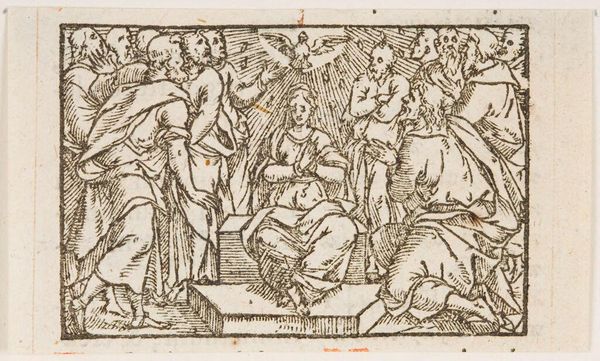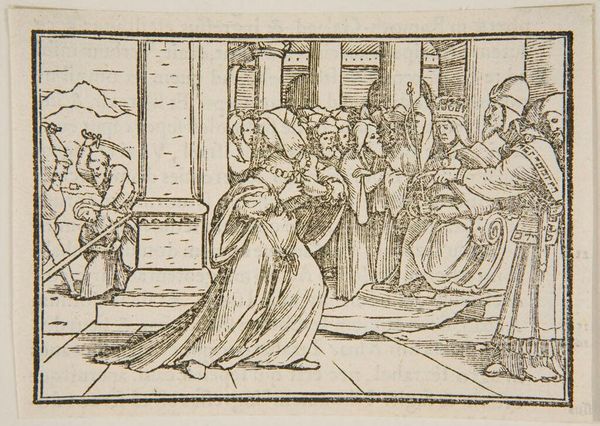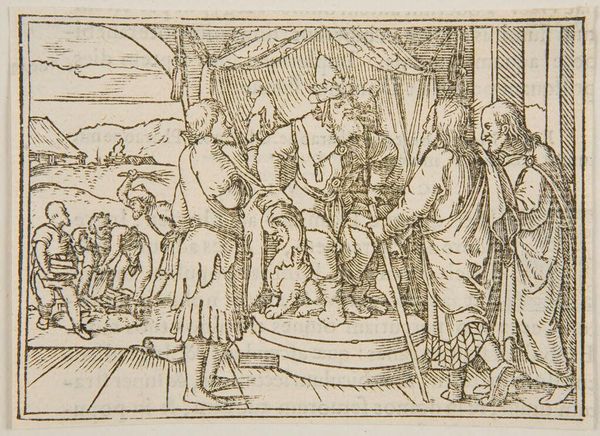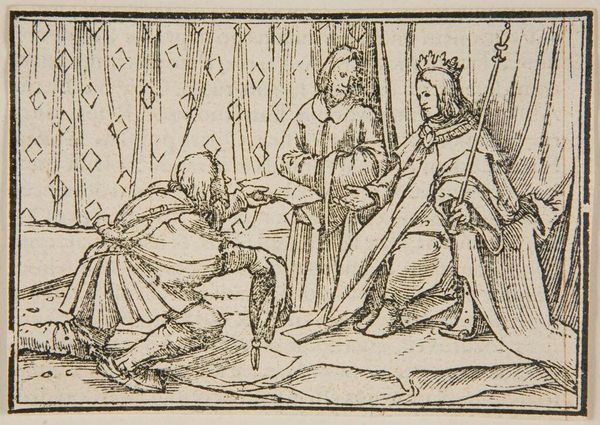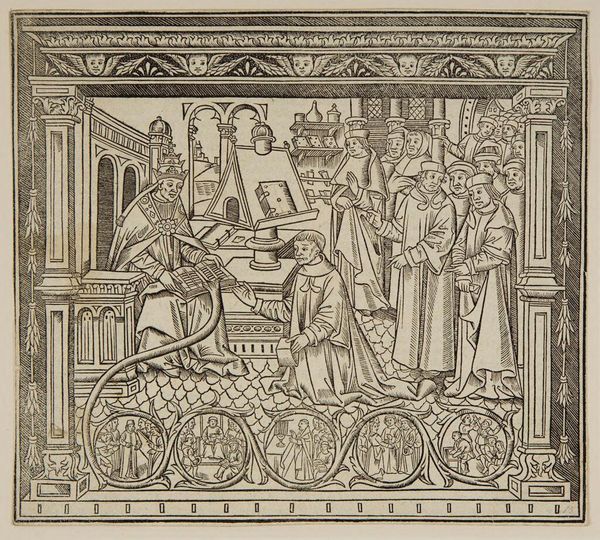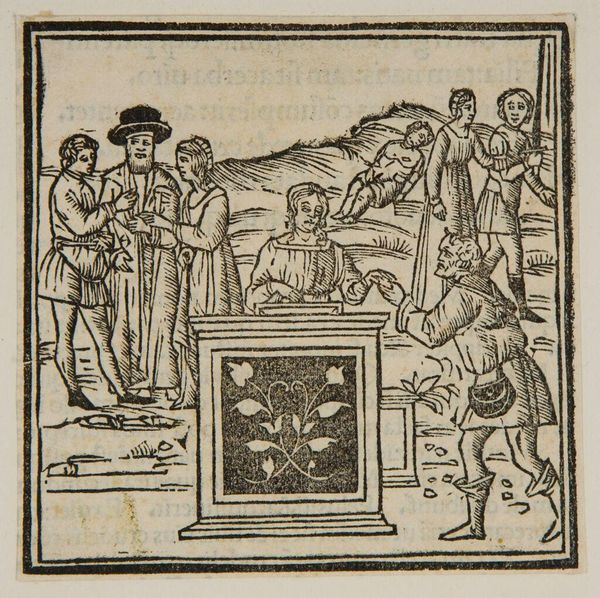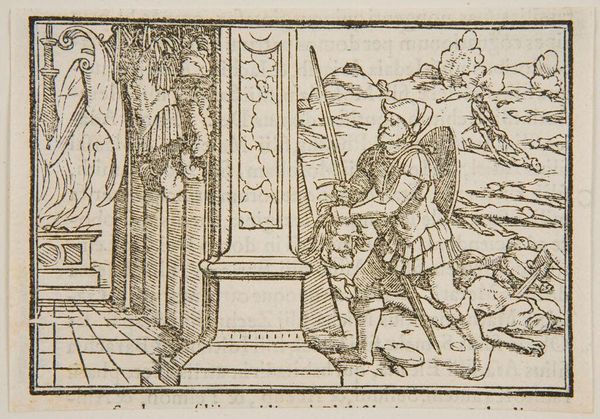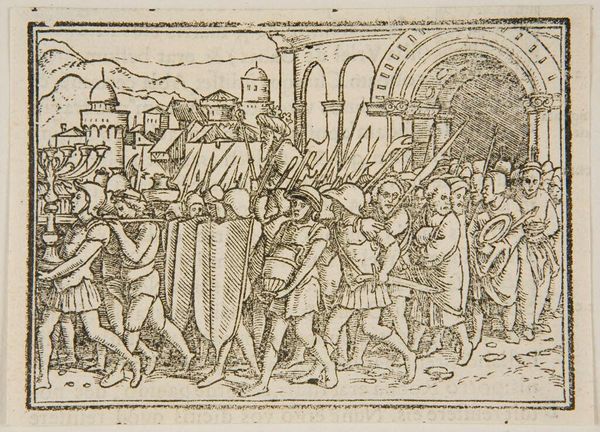
Copyright: CC0 1.0
Editor: Here we have Holbein the Younger's "1 Chron. XVI," a black and white print. It's striking how the figures are packed together, all seemingly focused on the central, seated figure. How do you interpret this work in its historical context? Curator: This print was likely part of a series, aimed at a wide audience during the Reformation. The choice of biblical scenes, rendered in easily reproducible woodcuts, democratized religious imagery. Consider the role of such images in shaping public opinion and religious discourse. Editor: So, it's not just art, but also a form of religious and perhaps even political communication? Curator: Precisely. Holbein's work became part of a larger visual culture influencing social and religious identities. These inexpensive prints gave people access to art and ideas. Editor: That's a great reminder that art exists within broader social and cultural currents. Curator: Indeed. It highlights the power of images in shaping collective beliefs and narratives.
Comments
No comments
Be the first to comment and join the conversation on the ultimate creative platform.

